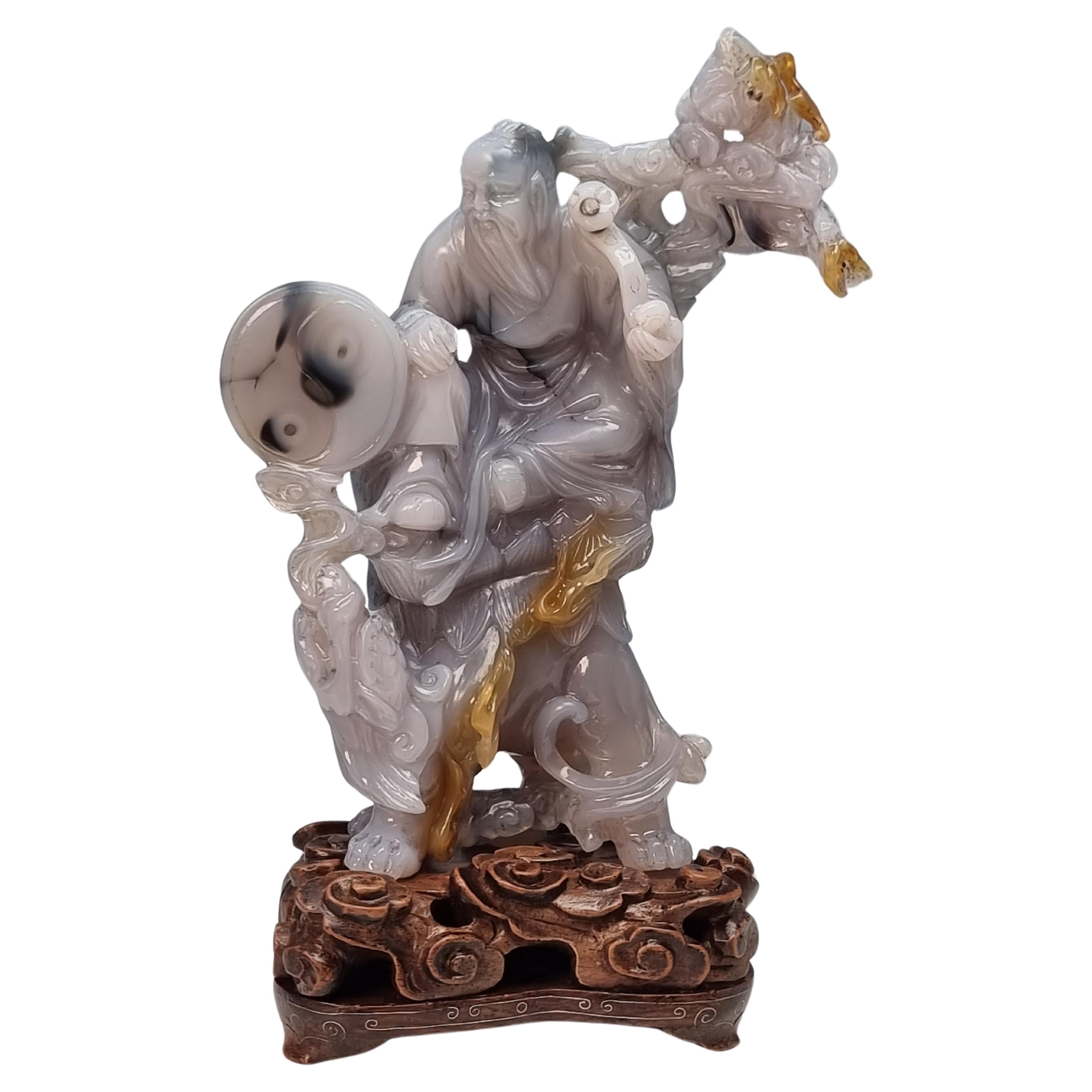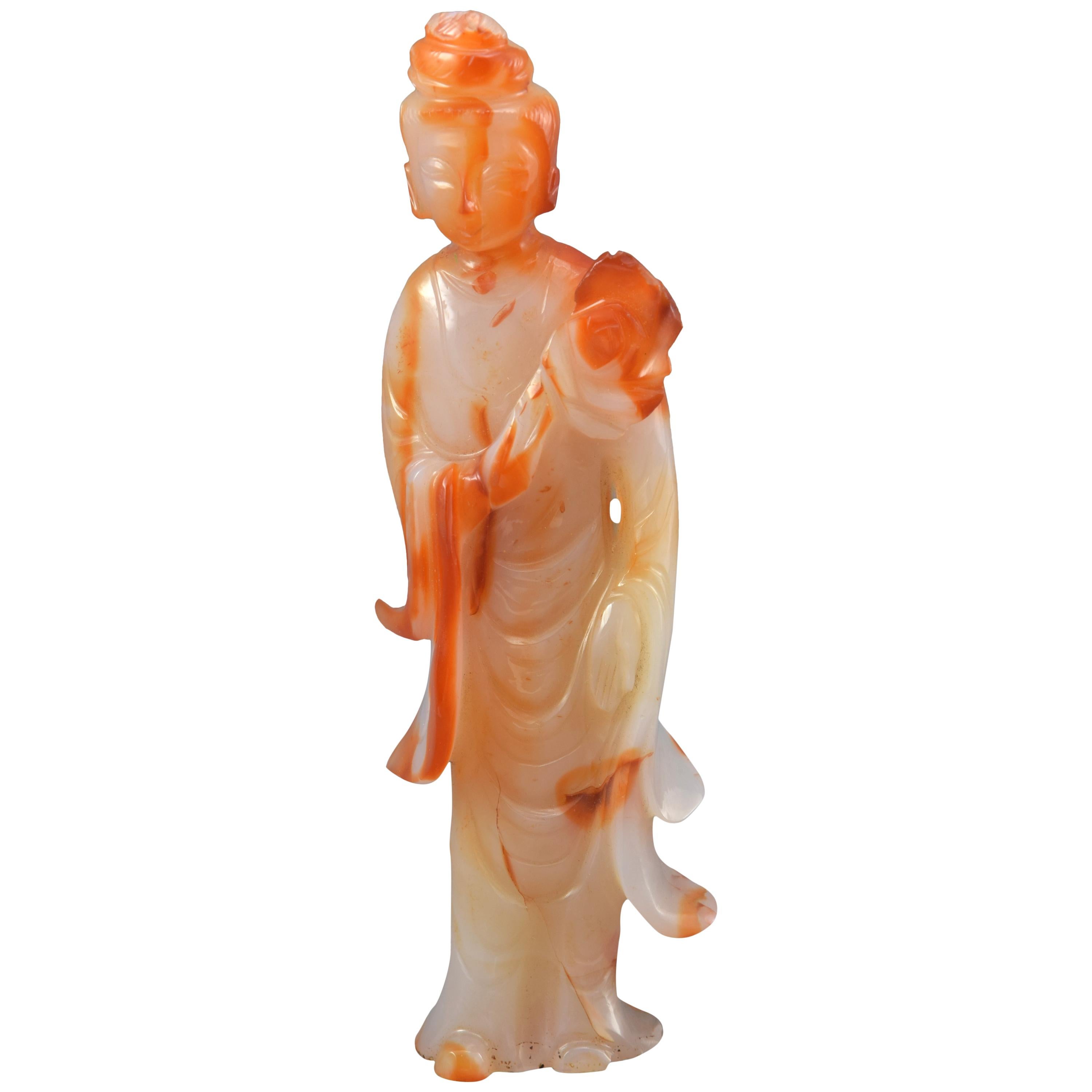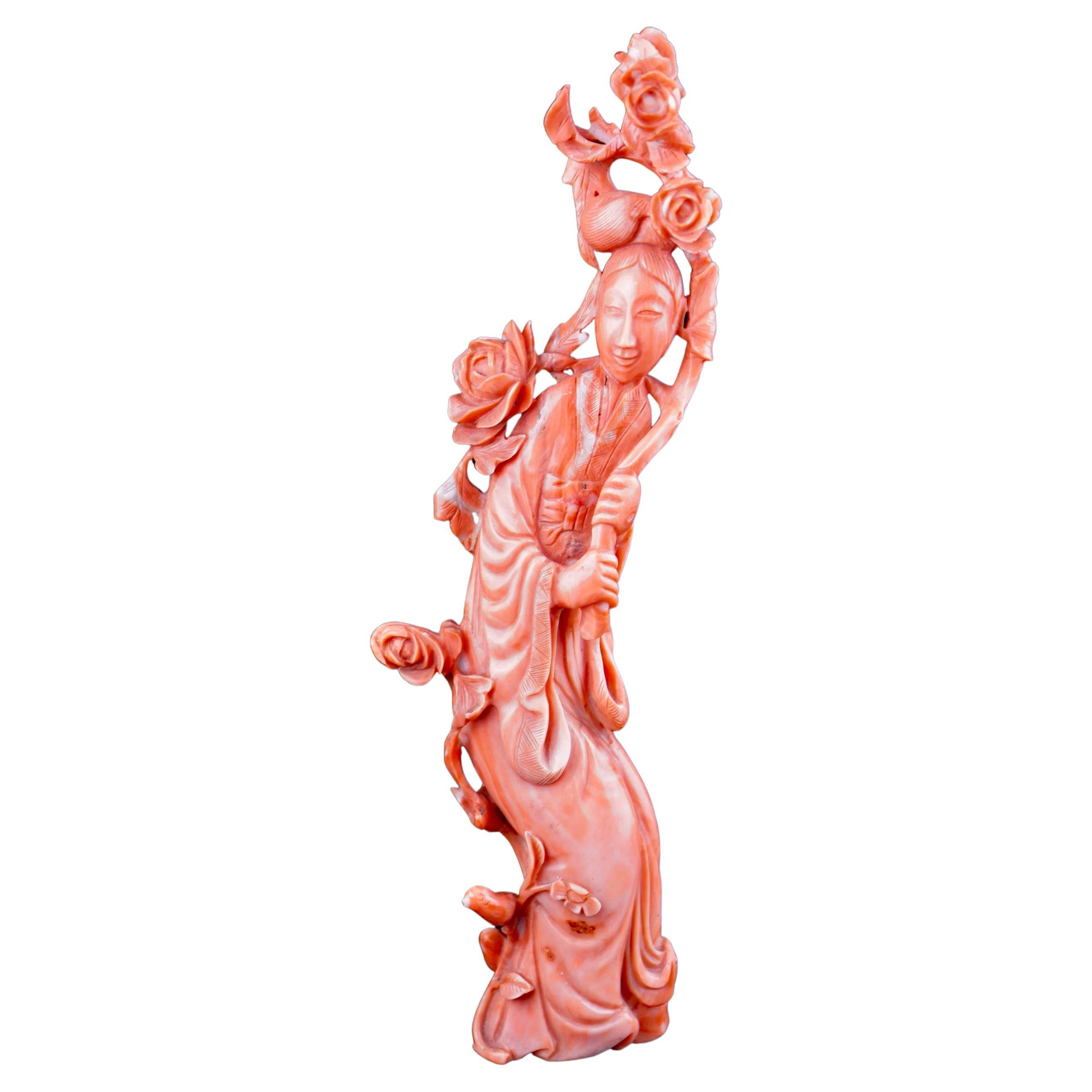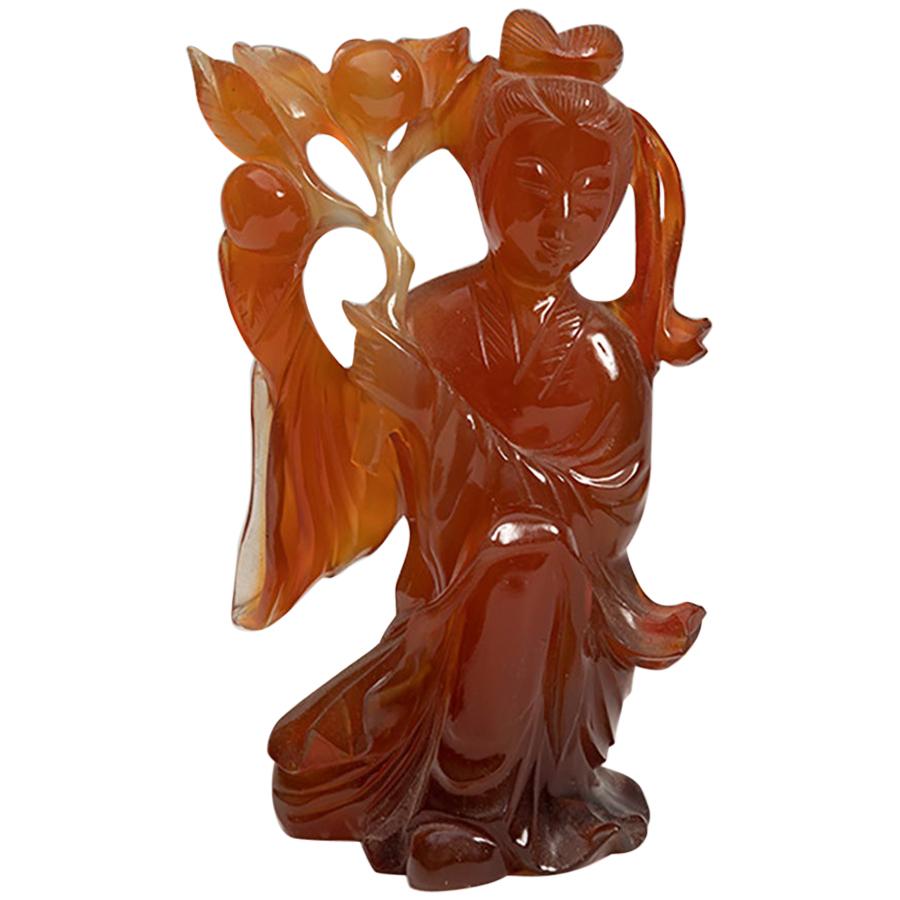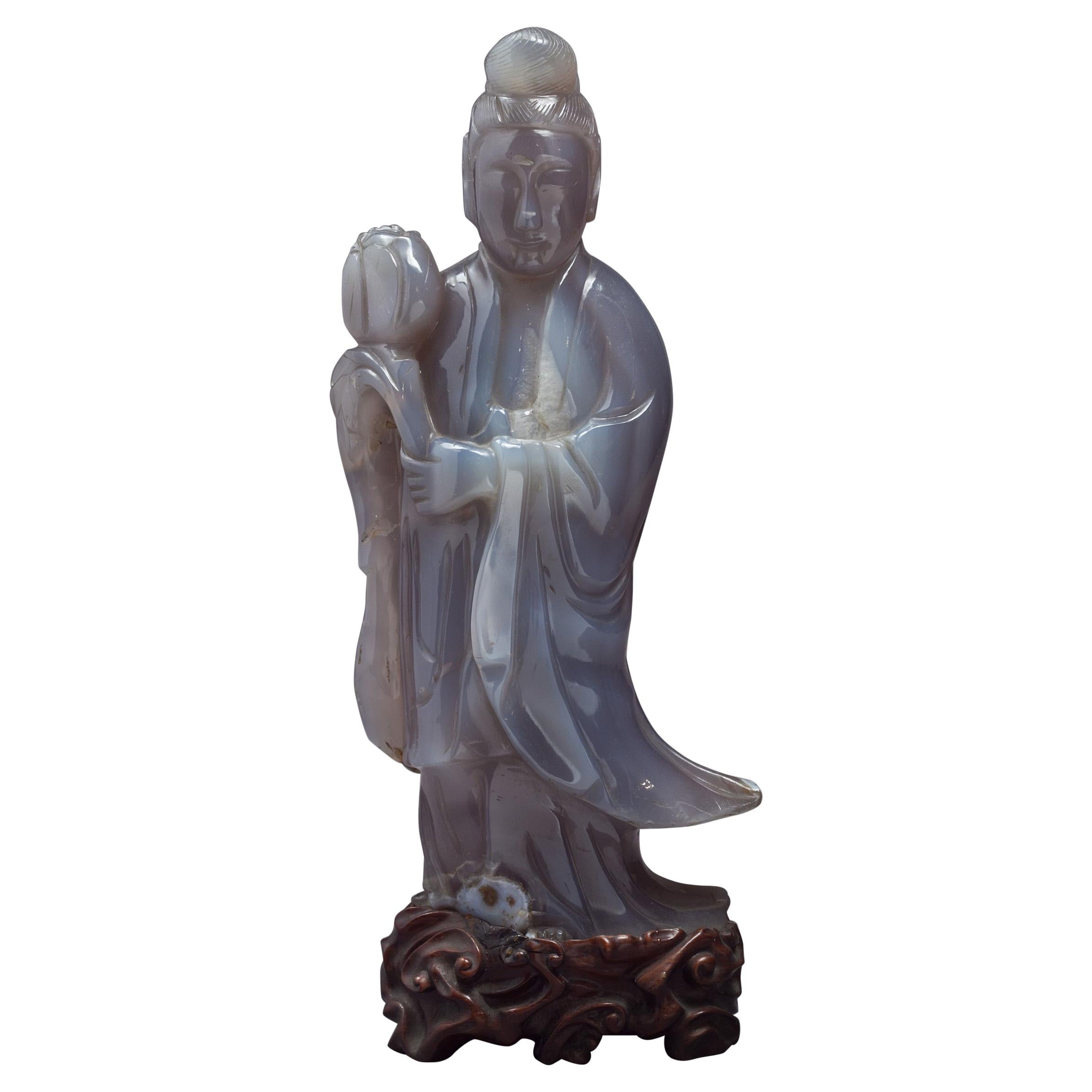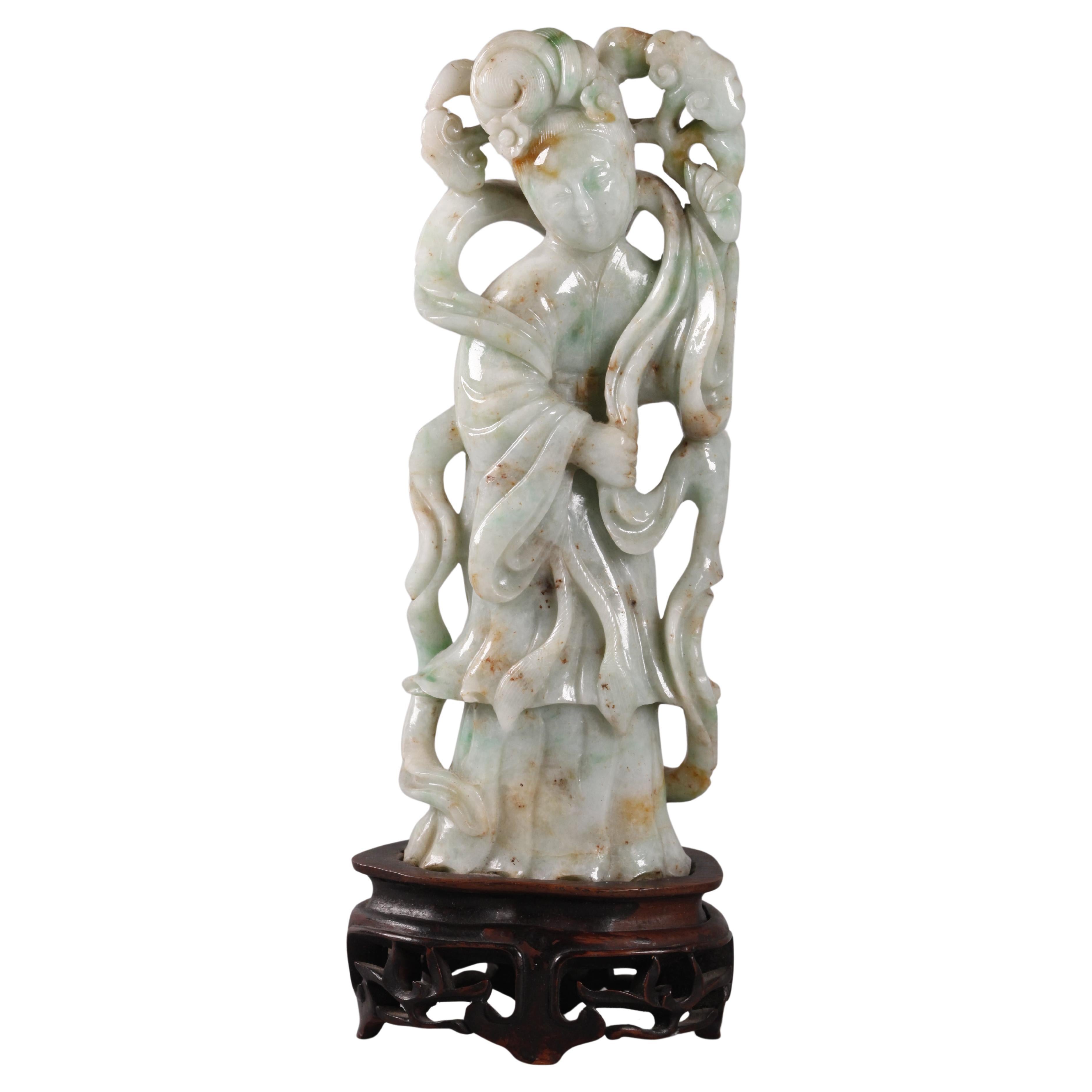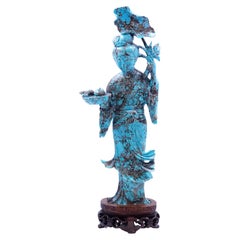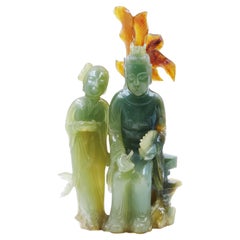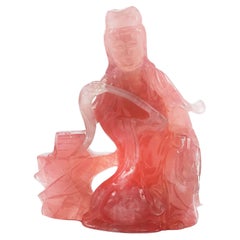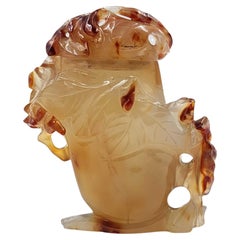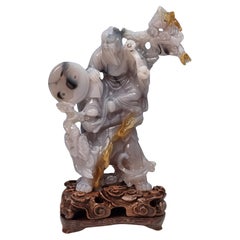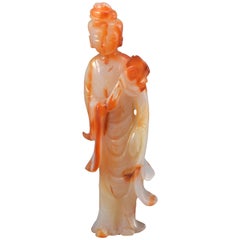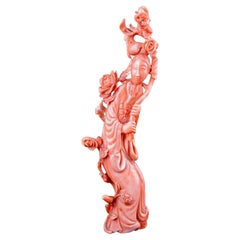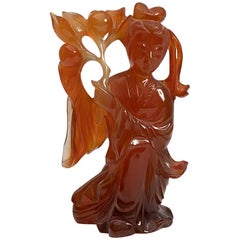Items Similar to Oriental figure, Qing Dynasty, woman carved in carnelian agate
Want more images or videos?
Request additional images or videos from the seller
1 of 12
Oriental figure, Qing Dynasty, woman carved in carnelian agate
$2,200
£1,669.31
€1,908.71
CA$3,072.80
A$3,416.54
CHF 1,783.93
MX$41,587.60
NOK 22,762.15
SEK 21,327.05
DKK 14,245.02
Shipping
Retrieving quote...The 1stDibs Promise:
Authenticity Guarantee,
Money-Back Guarantee,
24-Hour Cancellation
About the Item
Oriental figure, Qing Dynasty, woman carved in carnelian agate.
Carved carnelian agate figure that represents an oriental woman surrounded by flowers and next to her a long-tailed bird, holding branches in both hands.
Measures:
With base:
Height: 18 centimeters
Length: 8 centimeters
Depth: 6 centimeters
Without base:
Height: 15 centimeters
Length: 8 centimeters
Depth: 5 centimeters
- Dimensions:Height: 7.09 in (18 cm)Width: 3.15 in (8 cm)Depth: 2.37 in (6 cm)
- Style:Qing (Of the Period)
- Materials and Techniques:
- Place of Origin:
- Period:
- Date of Manufacture:1800-1890
- Condition:Wear consistent with age and use. Minor losses. Minor structural damages. Minor fading.
- Seller Location:Autonomous City Buenos Aires, AR
- Reference Number:1stDibs: LU7304238931702
About the Seller
4.6
Vetted Professional Seller
Every seller passes strict standards for authenticity and reliability
Established in 1970
1stDibs seller since 2022
49 sales on 1stDibs
Typical response time: 6 hours
- ShippingRetrieving quote...Shipping from: Buenos Aires, Argentina
- Return Policy
Authenticity Guarantee
In the unlikely event there’s an issue with an item’s authenticity, contact us within 1 year for a full refund. DetailsMoney-Back Guarantee
If your item is not as described, is damaged in transit, or does not arrive, contact us within 7 days for a full refund. Details24-Hour Cancellation
You have a 24-hour grace period in which to reconsider your purchase, with no questions asked.Vetted Professional Sellers
Our world-class sellers must adhere to strict standards for service and quality, maintaining the integrity of our listings.Price-Match Guarantee
If you find that a seller listed the same item for a lower price elsewhere, we’ll match it.Trusted Global Delivery
Our best-in-class carrier network provides specialized shipping options worldwide, including custom delivery.More From This Seller
View AllQing dynasty standing oriental lady in carved turquoise
Located in Autonomous City Buenos Aires, CABA
Qing Dynasty oriental lady standing in carved turquoise
Elegant figure of a woman carved in turquoise stone, with traditional Chinese clothes and in one ...
Category
Antique 19th Century Chinese Qing Sculptures and Carvings
Materials
Stone
Chinese figure of 20th century characters in emerald root
Located in Autonomous City Buenos Aires, CABA
Chinese figure of 20th century characters in emerald root
Polished and shiny, what makes this piece charming is the detail of the flower that goes on the back of the characters.
Nice...
Category
20th Century Chinese Other Figurative Sculptures
Materials
Jade
China Colección Figure Cárcel Rose Quartz Rock Crystal
Located in Autonomous City Buenos Aires, CABA
China Colección Figure Cárcel Rose Quartz Rock Crystal
Beautiful rose quartz figure of a seated Chinese lady, she seems to be caressing the head of...
Category
20th Century Chinese Sculptures and Carvings
Materials
Quartz
Antique Chinese Carved Carnelian Mini Vase
Located in Autonomous City Buenos Aires, CABA
Mini Antique Chinese Carved Carnelian Vase
Mini antique Chinese carved carnelian vase. This delicate piece features an intricate design, with floral motifs carved into the surface of...
Category
20th Century Chinese Mid-Century Modern Antiquities
Materials
Stone
Asian Hand Carved Buddha Coral Figurine from the Qinq Dynasty
Located in Autonomous City Buenos Aires, CABA
Qing Dynasty Hand Carved Asian Buddha Coral Figurine
Beautiful coral carving of Buddha reclining on a trunk, with perfectly executed details.
Measures:
Height: 9.5 centimeters
Length...
Category
Antique 19th Century Chinese Qing Sculptures and Carvings
Materials
Coral
Oriental Lady Murano Glass Figurine
By Murano Glass Sommerso
Located in Autonomous City Buenos Aires, CABA
Murano Glass Oriental Lady Figurine
Beautiful Italian glass figure, Murano, of a cream-colored oriental lady, with black details on both the base and the decorations on the hair, and...
Category
20th Century Italian Mid-Century Modern Figurative Sculptures
Materials
Art Glass
You May Also Like
A Chinese hand carved agate hardstone figure group on stand circa 1930
Located in Central England, GB
This amazing Chinese carving has been cut from a single large boulder grey agate hardstone which has some brown and black veins and inclusions which the artist carver had cleverly us...
Category
Mid-20th Century Chinese Chinese Export Sculptures and Carvings
Materials
Agate
Oriental Figurine, Hard Stone, 20th Century
Located in Madrid, ES
Stylized figure made of hard stone of white and orange colors, with striking tonal variations, that perhaps represents one of the Eight Immortals of the Taoist pantheon, He Xiangu (who is usually shown holding a lotus flower, sometimes also accompanied by a sheng, or by a mythological bird called...
Category
20th Century Asian Other Sculptures and Carvings
Materials
Stone
Chinese Red Coral Carving of Female Figure Qing Dynasty
Located in Sarasota, FL
Chinese carved red coral lady with flowers and flowing robes. Very fine work from Qing Dynasty. Weight 236 g. Last two images taken under natu...
Category
Antique Mid-19th Century Chinese Chinese Export Sculptures and Carvings
Materials
Coral
20th Century Chinese Soapstone Guanyin Figure Sculpture
Located in Marbella, ES
20th century Chinese soapstone Guanyin figure sculpture.
Category
Late 20th Century Chinese Sculptures and Carvings
Materials
Stone
Large Chinese Agate Figure of Kuan Yin, circa 1890
Located in New York, NY
Large Chinese Agate figure of Kuan Yin, circa 1890.
Category
Antique 1890s Chinese Figurative Sculptures
Materials
Agate
Chinese jade female immortal, Republican period
Located in New York, NY
on fitted wooden base; 1in(D) x 3in(W) x 8in(H) are the dimensions of the jade carving only; overall measurements with wooden base: 9.5in(H) x 3.5in(W)
Category
Early 20th Century Chinese Sculptures and Carvings
Materials
Jade
More Ways To Browse
Chinese Qing Figure
Oriental Sculpture
Carved Carnelian
Oriental Figure
Asian Woman Sculpture
China Bird Sculpture
Chinese Carnelian
Antique Chinese Carnelian
Chinese Hexagon
Indonesian Panel
Hindu Bronze
Asian Woman Sculpture
Carved Monk
Bronze Buddha Hands
Asian Carved Wood Statue
Carved Teak Asian Furniture
Lions Wood Carvings
Antique Furniture Nepal
